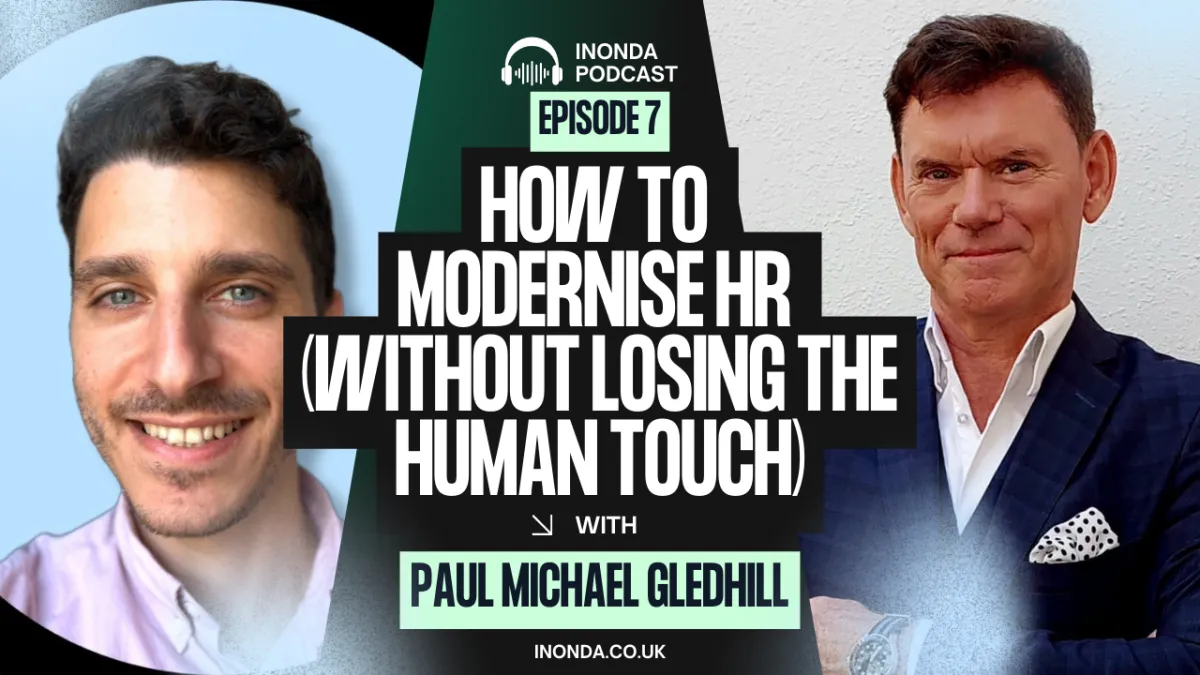
Post Exit Founder: How To Modernise HR Without Losing The Human Touch: Paul Michael Gledhill
Stepping into HR and learning technology takes more than following trends.
You must rethink how you work, build relationships, and adapt to new tools.
Paul Michael Gledhill has lived this.
I sat down with Paul to understand how a customer-centred mindset and a forward-looking approach can spark real change.
Watch the full interview here:
Early Lessons: Guitars, Amplifiers, and a Leap of Faith
Paul began as an electrical engineer—driven, he jokes, by wanting to fix his own guitars and amplifiers. He soon immersed himself in training and development. As he puts it, “I was either on a course or delivering one.” That hands-on start shaped his approach, blending tech know-how with a passion for helping people learn.
He moved to Dubai over two decades ago, when, in his words, “there were only a couple of roads and half a dozen hotels.” The region transformed into a hub of innovation and new business opportunities. Spotting the potential for e-learning, Paul and his business partner, Janine, took the leap: “We saw it was the right time.” Few knew what a “learning management system” was, so they had to educate the market from scratch.
Building a Business on Relationships and Tech
“The best part of running a business is the people,” Paul says. He emphasises strong relationships—whether with vendors or a supportive internal team. He credits much of his success to complementary skills. Early on, he handled engineering and training, while Janine brought financial and operational expertise. This synergy helped them expand from ready-made e-learning into custom content and later tech platforms.
They also faced decisions about investment and growth. Paul recalls sleepless nights, balancing reinvestment, building teams, and deciding when to bring in external partners. Over time, they formed an executive committee—“XCOM is really important in an organisation,” he explains—so the company could move forward with informed feedback from diverse specialists. This shift freed him to focus on strategy.
Embracing Emerging Technology
For Paul, staying on top of new tech is crucial. “Follow the tech,” he says, naming AI, VR, and blockchain. During the pandemic, this paid off. Traditional face-to-face training companies struggled, but e-learning thrived. “We were absolutely on fire… suddenly every TV station and radio station wanted to talk to us.” Years of groundwork met a surge in demand.
Yet Paul warns against adopting cool technology without planning. You need the right people and a clear sense of how a tool fits your organisation. Effective partnerships let you explore breakthroughs while staying focused on customer needs.
Key Steps in Paul’s Results Recipe
Paul’s method is simple and consultative, rooted in real client conversations:
Ask the Right Questions He begins by learning each client’s specific pain points. “Otherwise,” he says, “you end up selling them things they don’t need.”
Tailor the Solution He started with off-the-shelf e-learning, then moved to custom modules and bespoke platforms. This adapted approach comes from listening to what customers truly need, then creating the right capabilities to deliver.
Stay Current with Tech Paul focuses on AI, VR, and blockchain. He’s convinced ignoring emerging tools makes you lose ground fast. “We need to be creative about how we use what’s available.”
Offer Scalable, Cloud-Based Delivery Modern workforces want training anywhere. Cloud technology, Paul explains, lets people learn on the go.
Keep Feedback Flowing He supports open-door policies so employees, clients, and partners can share concerns freely. He sees that as the best way to catch small cracks before they spread.
Lessons in Adaptation
Paul’s journey, from fixing guitars to running a thriving HR tech business, shows the power of spotting where the market is heading and meeting it with innovation. “You need to see where your industry is going, then decide how to use that knowledge,” he says.
Stubbornly sticking to outdated methods is risky. Organisations that dismiss new learning strategies face disengaged employees and wasted resources. Meanwhile, those embracing flexible, cloud-based, AI-enhanced approaches stay ahead.
Tips from Paul to Adapt Effectively
Choose the Right Partners “Identify talent where the gaps are.” By pairing complementary skills, you avoid overextending yourself.
Build Trust, Even When People Leave Paul remembers sleepless nights about letting staff go. He learned, “Manage people out with the same enthusiasm that you managed them in.”
Don’t Fear Competition He views new entrants and disruptors as healthy, urging open chats with peers—even competitors—to anticipate market shifts.
Plan for the Long Term Paul suggests looking at least two or three years ahead. That foresight helped him time his investments and later acquisitions without being blindsided.
